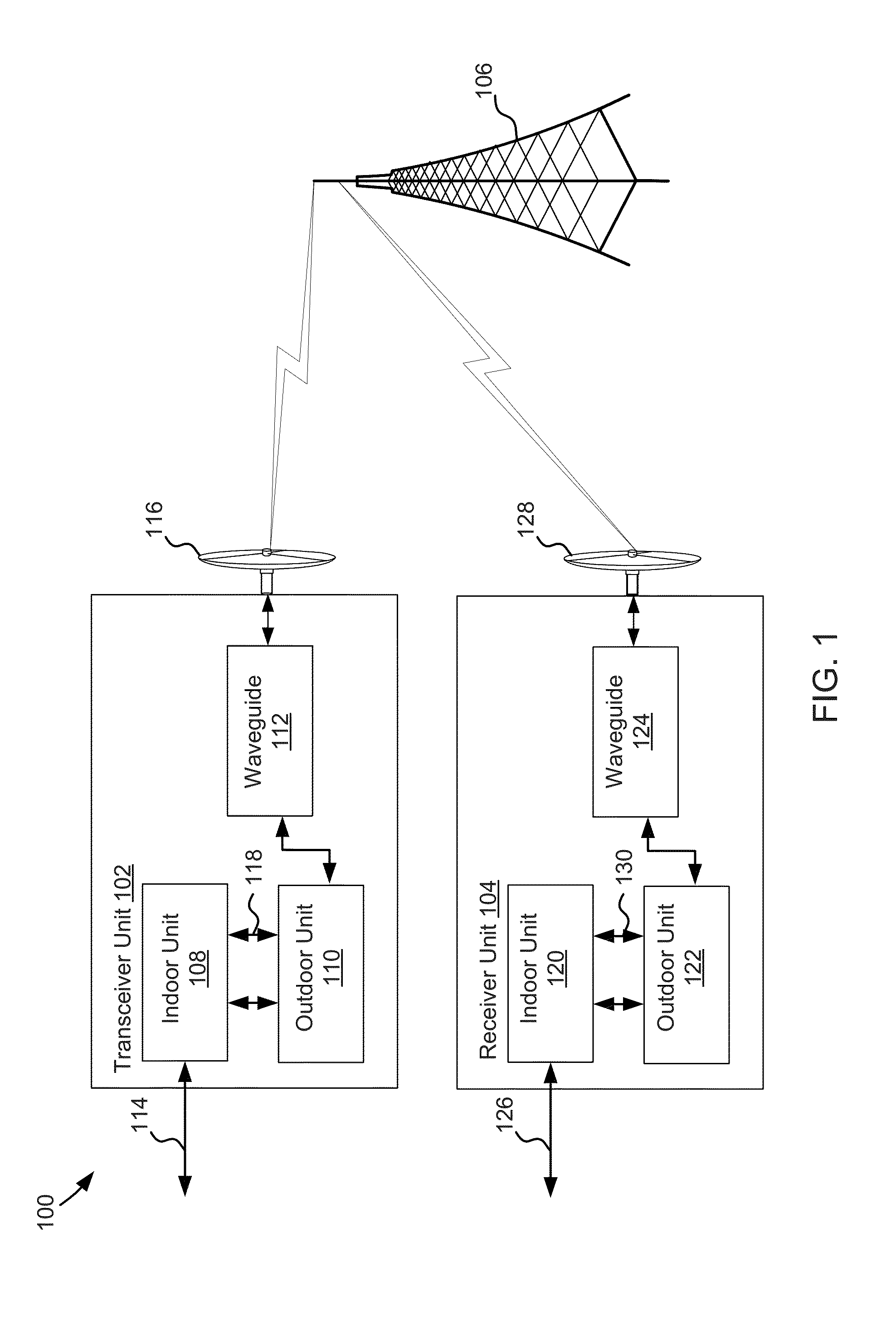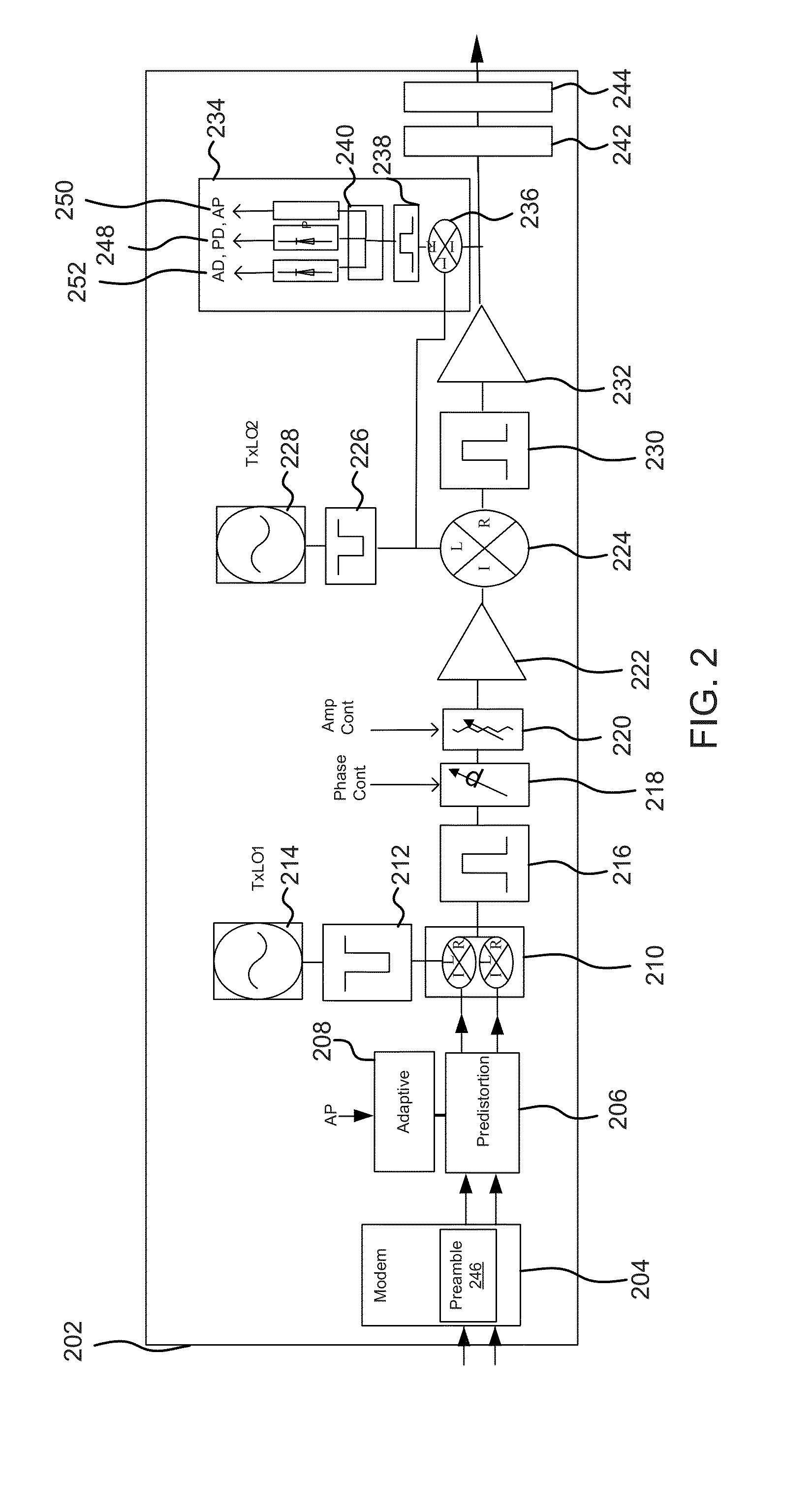Systems and methods for adaptive averaging in frequency domain equalization systems
a frequency domain equalization and frequency domain technology, applied in the field of frequency domain equalization systems can solve the problems of nonlinear distortion caused by components of the transmitter, the difficulty of time and frequency selective fading channels in wireless communication systems, and the inability to correct nonlinear distortion in the receive chain, so as to reduce the effect of nonlinear nois
- Summary
- Abstract
- Description
- Claims
- Application Information
AI Technical Summary
Benefits of technology
Problems solved by technology
Method used
Image
Examples
Embodiment Construction
[0026]In various embodiments, frequency domain equalization may be applied in microwave transmission systems (e.g., capable of 80 GHz). Channel estimation can be improved with averaging of the preamble (channel estimation) through several instances and may be effective if the channel is not significantly changing during time of averaging and the noise is uncorrelated. However in some cases noise is correlated. Examples of correlated noise include errors due to I / Q imbalances or Power Amplifier nonlinearities, which standard linear equalizers cannot correct. Such impairments influence channel estimation accuracy which in turn further degrades demodulation performance. For example, complex symbols with I and Q analog components may become imbalanced in transmission and / or noise produced by components of the wireless transmission system. If the imbalance is nonlinear and corrective action is not taken, errors may occur during frequency domain equalization which may render frequency dom...
PUM
 Login to View More
Login to View More Abstract
Description
Claims
Application Information
 Login to View More
Login to View More - R&D
- Intellectual Property
- Life Sciences
- Materials
- Tech Scout
- Unparalleled Data Quality
- Higher Quality Content
- 60% Fewer Hallucinations
Browse by: Latest US Patents, China's latest patents, Technical Efficacy Thesaurus, Application Domain, Technology Topic, Popular Technical Reports.
© 2025 PatSnap. All rights reserved.Legal|Privacy policy|Modern Slavery Act Transparency Statement|Sitemap|About US| Contact US: help@patsnap.com



